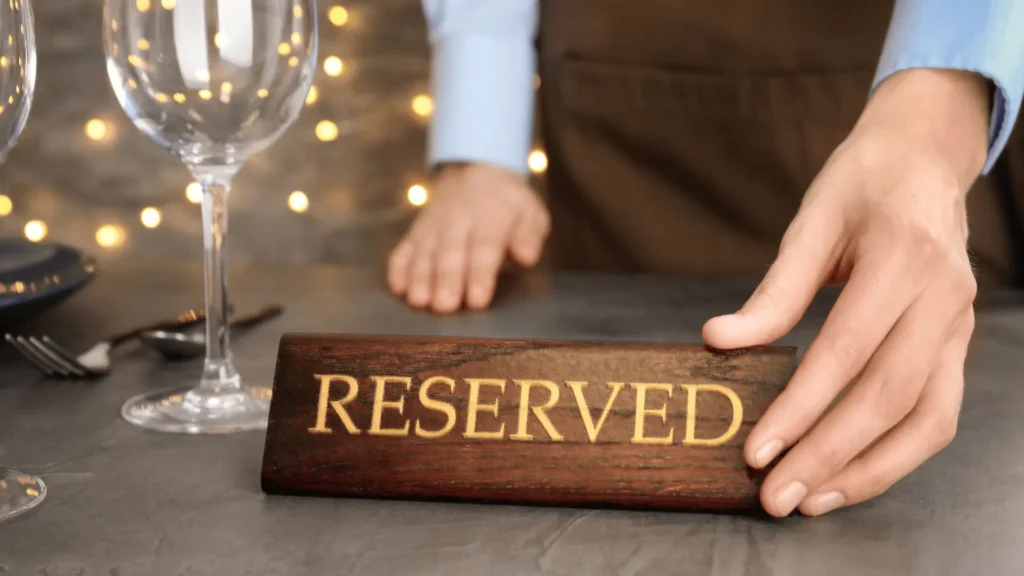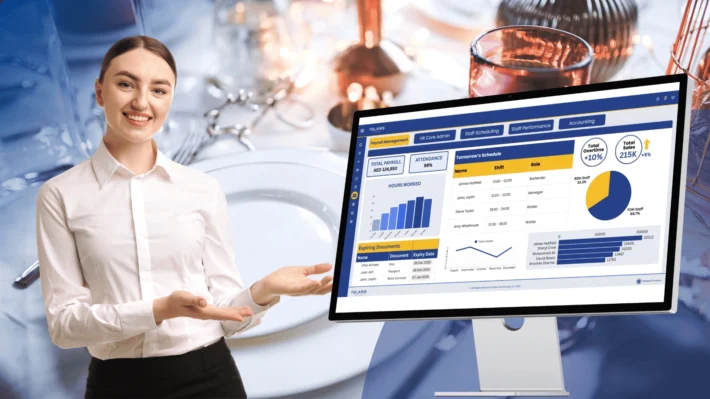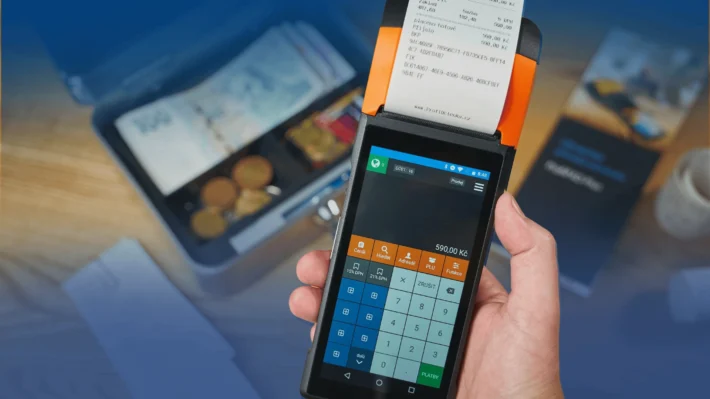5 Ways an All-in-One Restaurant ERP System Supercharges Your Business Efficiency

Introduction
If you’re not already using an all-in-one enterprise resource planning (ERP) system to manage your F&B operations in 2025, you are missing out.
According to Harvard Business Review, restaurants that implement an ERP system see a 15-20% boost in efficiency compared to those without one. In this blog, we’ll dive into how an all-in-one restaurant ERP solution can help businesses like yours work faster, manage operations better, and become more efficient. We’ll cover five key points—and a bonus—so let’s get started:
Number 1: Centralization of Restaurant Operations
An ERP system, by definition, is a software solution that covers an organization’s core business processes, like sales, accounting, inventory, purchase, suppliers, HR, marketing, customer relations, all in an unified platform. In the food and beverage (F&B) environment, an ERP is also know as an all-in-one restaurant solution to manage all front of house and back of house operations.
Centralization through a restaurant ERP system enhances efficiency by bringing all essential operations—like inventory, sales, staffing, and accounting – onto one platform. This unified approach eliminates the need for multiple, disconnected systems, reducing manual work and errors. Without an ERP software that has access to all connected systems, you need to update everything manually across sales, delivery, inventory, purchase, etc.
However, when all systems are available in one place, under the same software, restaurant managers can quickly update prices or menu items, access real-time data, make informed decisions, and streamline processes, ultimately saving time and resources.

Referring to this advantage that an ERP system provides, one of our customers, Rose Ann Suarez, Operations Manager at The Honestry, a local healthy dessert store, says: “Polaris has simplified how we manage orders. Updating the menu in one place, automatically interacts with all delivery platforms apps. So, in just one snap, everything is updated in the system, using Polaris ERP.”
Imagine the hassle of manually updating every single delivery app whenever your menu changes or prices need adjustments. The time wasted and the frustration from manual errors can quickly add up, making the process both inefficient and error-prone. Not only is Polaris ERP a centralized platform that covers all internal systems, but it also provides smooth integration with third party food delivery aggregators, like Deliveroo, Careem, Noon, Talabt, etc. As Rose confirms, with only one snap, any menu update is automatically reflected across all the delivery apps.
Number 2: Real-Time Reporting
Real-time reporting boosts operational efficiency by providing up-to-the-minute insights into key aspects of a restaurant’s operations. With real-time data, managers can quickly identify issues like low inventory levels, staff performance, or sales trends and take immediate action to address them. This reduces downtime, minimizes errors, and ensures that decisions are based on the most current information, leading to smoother operations and better overall efficiency.
Here is how restaurants without an ERP handle reporting, compared with restaurants that are using an ERP system:
Scenario Without Restaurant ERP Software:
- Data Silos: Information is spread across different systems for inventory, sales, accounting, and staff management. Each system operates independently, making it difficult to get a complete picture of the business.
- Manual Data Entry: Managers often need to manually pull reports from each system, export data, and then consolidate it into spreadsheets. This process is time-consuming and prone to errors.
- Delayed Insights: Because data isn’t updated in real-time, reports are often outdated by the time they’re compiled. This lag means that decisions are based on old information, which can lead to missed opportunities or slow responses to problems.
- Increased Labor Costs: The need for manual data entry and reconciliation adds to the workload, requiring more staff time and effort, which increases operational costs, while decreasing quality in front of the house.
- Frustration and Errors: The constant juggling of multiple restaurant management systems and manual processes can lead to frustration among staff, along with a higher likelihood of mistakes, such as incorrect data entry or overlooked discrepancies.
Scenario with ERP for Restaurants:
- Centralized Data: An ERP system integrates all restaurant operations—inventory, sales, accounting, HR, and more—into a single platform. This means all data is stored and accessed in one place, eliminating silos.
- Automatic Data Sync: The system automatically collects and updates data in real-time, providing instant access to accurate, up-to-date reports without manual intervention.
- Quick Decision-Making: With real-time insights readily available, managers can make informed decisions faster, responding quickly to inventory needs, sales trends, or staffing issues.
- Cost Savings: The reduction in manual labor, combined with more efficient operations, helps lower overall costs. Managers and staff can focus on higher-value tasks rather than data entry and reconciliation.
- Reduced Errors: Automation reduces the risk of human error, ensuring more reliable data and smoother operations.
For one of our clients, the implementation of Polaris ERP decreased manual data entry by 75%, reducing errors and freeing up valuable staff time for customer service, while also improving inventory management, reducing waste by 20%, due to the real-time insights available with our system.
Number 3: Scalability
If growing your F&B business, expanding it to multiple branches, and managing it efficiently is your goal, you should know that the only restaurant software that can help you scale is an all-in-one ERP system, and here is why.
Multi-Branch Restaurant Management
Any other software, like POS, inventory management or accounting software alone or integrated will not be able to support your business’ growth, nor align the operations from across multiple branches of your F&B business. All these need to be done manually, which exposes you to manual errors, as well as time loss, and overall, inefficiency.
In addition, a restaurant ERP system has the capacity of collecting data from all available brands, branches, and locations, allowing you to get a comprehensive overview of your total sales, profits, expenses, available cash flow and more. The advantage of this is that you will be able, at any moment, to understand how your business is doing, and where it is headed. You can decide, for instance, based on accurate data captured from all your branches, whether it is a good moment to invest or to expand your business.
Flexibility to Support F&B Business Growth
Designed to scale with your business, an ERP system provides the flexibility and tools needed to support growth at any stage. As your business expands, the ERP already has the features and functionalities to support your business’ growth, ensuring that you have the resources to manage increased complexity and continue to operate efficiently.
Using the advantages of our restaurant ERP solution, Hoop Desserts & Shakes grew from one to seven branches in three years, while another one of our clients, reached from 45 to 57 restaurants, adding 12 new branches in 12 months.
Number 4: Advanced Financial Security
An ERP system boosts restaurant efficiency by offering strong financial security features. It protects sensitive data like sales records and customer details with encryption and secure access controls. This reduces the risk of data breaches and keeps operations smooth.
By ensuring that only authorized personnel can access specific data and providing real-time monitoring and alerts for any suspicious activities, the ERP system helps maintain operational integrity and trustworthiness. With real-time monitoring and alerts, staff can focus on service without worrying about data security, which increases operational efficiency.
Within 12 months of using Polaris ERP, Qasab Turkish Cuisine boosted financial integrity by 80%, thanks to improved user access controls and strong security measures that significantly reduced the risk of financial loss and ensured accurate sales reporting.
Number 5: Automation
In a restaurant environment, there is a multitude of manually handled and repetitive tasks, such as:
- Inventory management (manually counting stocks or filling inventory sheets)
- Order processing (manually entering clients’ orders into multiple systems or paper logs and physically tracking order status)
- Financial reconciliation (manually calculating daily sales, reconciling cash registers, and preparing financial reports), to name a few.
Automation through a restaurant ERP system transforms manual and repetitive tasks by covering them under a single platform. This means inventory is tracked in real-time, orders are processed automatically, and financial reports are generated without manual input. By reducing manual entry and errors, the ERP system streamlines operations, saves time, and assures accuracy of the data, and alignment of all systems.
Bonus:
AI-Powered Restaurant Software Capabilities
This last point, which not many restaurant software include, can make a significant difference in how you run your restaurant business. AI-Powered Menu Engineering, or AI-Powered Food Cost Calculator are AI-enabled capabilities that can supercharge your restaurant business, and this is how:
AI-Powered Menu Engineering
This revolutionary feature boosts restaurants’ operational efficiency by analyzing sales trends, customer preferences, and cost structures to recommend strategic menu updates. It categorizes menu items into segments like:
- Most Profitable and Most Popular
- Profitable, but not Popular
- Popular, but not Profitable
- Not Profitable and not Popular
This provides a clear opportunity to identifying which items drive profits and which need adjustments or must be removed from the menu. It then provides recommendations, based on the specific menu items and all sales, accounting, or purchase data, to help you reach your goal, be that increased revenue, or cost savings.
This targeted approach helps maximize revenue, reduce costs, and enhance customer satisfaction.
AI-Powered Food Cost Calculator

A restaurant ERP with an AI-powered food cost calculator boosts operational efficiency by automating the process of calculating food costs. It centralizes data from inventory, purchasing, and sales systems, allowing for real-time updates on ingredient costs and quantities without manual input. The AI analyzes this data to offer insights and recommendations, helping restaurants optimize costs, reduce waste, and maintain consistent dish quality, ultimately improving efficiency and profitability.
Besides supporting increased operational efficiency for F&B businesses, a restaurant ERP software solution also contributes to boosting profits and growing revenue, by speeding up the order processing process, and allowing more clients to be served.
Polaris ERP – All in One Restaurant Solution
Polaris ERP is a comprehensive solution designed specifically for the restaurant industry, addressing the unique challenges faced by F&B managers and owners. It enhances operational efficiency with advanced features tailored to the complexities of running a restaurant. With built-in AI capabilities, Polaris ERP goes beyond typical software by offering insights similar to business consultancy services. It leverages real-time data from your restaurant’s inventory, sales, accounting, and purchasing to provide customized recommendations that align with your business goals, helping you boost profits and streamline operations.
Continue Reading:
Ready to see it in action?
Book a free demo form
3 Comments
Comments are closed.




[…] How a Restaurant ERP System Simplifies Online […]
[…] Polaris ERP notes, restaurants using ERP systems have seen up to20% lower food waste and 15% higher […]
[…] Polaris ERP notes, restaurants using ERP systems have seen up to20% lower food waste and 15% higher […]